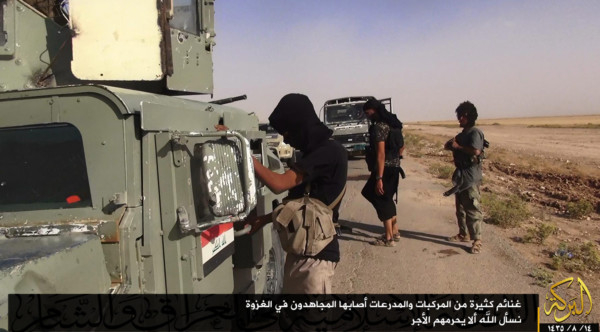
In recent weeks, politicians and pundits have likened the Syrian and Iraqi civil wars to the Thirty Years’ War and the other so-called religious wars that divided Europe in the late 16th and early 17th centuries. It’s easy to see what gave rise to the comparisons. In Europe, the warring parties were mostly Christians, but often one side supported Protestantism and the other Catholicism. In today’s Middle East wars, the combatants are mostly Muslims, but Sunnis and Shiites tend to be on opposite sides.
There are several dangers in making these comparisons, however. One is that they reinforce prejudices. Westerners tend to see history as linear, with the passing of years representing progress. Comparing 17th century Europe with today’s Middle East suggests the latter is trailing far behind the West’s historical “progress,” in that it is still struggling with the kind of religious differences that were resolved centuries ago in Europe. That is a dangerous and erroneous assumption.
A view of today’s Middle East as yesterday’s Europe also suggests that the region should be pushing for an “Arab Westphalia,” a settlement similar to the one that ended the terrible Thirty Years’ War in 1648. Unfortunately, Westphalia, or rather what it has come to symbolise, is part of the current problem.
The Westphalian international order is based on the belief that the world should be divided into sovereign nation states, each responsible for its own internal affairs, while also adhering to common values enshrined as international law. Religion, in this construct, is removed from politics, with the state as neutral guardian for religious rights, which are seen as part of wider human rights. For many in the Middle East, these ideas are simply part of Western imperialism and at odds with a different conception of the relationship between faith and politics.
Another danger with the comparison is that it is based on a faulty and far-too-simplistic understanding of European history. Early-modern European conflicts such as the Thirty Years’ War are often thought of as “religious wars.” But in 17th century Europe, as in the Middle East today, the reality was more complicated.
The tensions that led to the Thirty Years’ War had been building for a long time, but the war itself dates to the famous Defenestration of Prague in May 1618. Protestants in Bohemia were angry that their Catholic king, a supporter of the Catholic Counter-Reformation, was interfering with the construction of Protestant churches. In response, the Protestants threw two Catholic imperial regents and their secretary out of a window.
The wars that followed that act were as much about power and economics, however, as about religion. One chief cause was the refusal of the German Protestant princes and aristocrats to accept their exclusion from the wealth and political influence of the German church, which remained reserved for Catholics under the Holy Roman Empire’s constitution.
And at least three other major wars overlapped with the Central European one. Spain was locked in a losing battle against Dutch independence; a struggle that also had religious elements because independence was primarily desired by Dutch Protestants. Spain also fought a separate war with France from 1635 to 1659. Finally, Sweden, Denmark, Poland and Russia were engaged in a series of struggles over dominance of the Baltic and its lucrative trade routes.
All these conflicts were accompanied by widespread efforts to rally international support along the lines of “my war is also your war.” Religious solidarity proved extremely weak, however, which is why none of the factions in the Thirty Years’ War emphasised religion in their propaganda.
This provides a major contrast with the present conflicts, which have used religion as a primary motivator. Though contested, the imperial constitution remained acceptable to all parties precisely because it was simply Christian rather than exclusively Protestant or Catholic. Rather than taking religion out of politics, Westphalia continued the line already adopted in the Peace of Augsburg in 1555 of adding to the complexity of the imperial constitution, making it harder for local disputes to polarise around simple, clearly defined issues.
A second striking contrast between the European wars of old and today’s conflicts is the virtual absence in the 17th century of “holy war” arguments. All the belligerents fought using professional soldiers. Even when hard-pressed, the Protestant Bohemian rebels preferred to negotiate with the Muslim Ottoman sultan for regular troops rather than arm their own peasants in a holy war.
The war was still religious in the sense that it was interpreted by clergy of all hues as divine punishment for their congregation’s sins. Instead of taking up arms against their neighbours, parishioners were urged to fight their inner demons, reforming their behaviour to correspond to official ideals of piety and obedience.
This suggests at least one commonality between the conflicts in the 17th and 21st centuries. Secularism was, and is, a minority belief. Seventeenth-century Europeans could diverge sharply between militants and moderates. The latter were more pragmatic and appear more reasonable to us today, but they rarely accepted tolerance as anything other than a necessary evil to avoid further bloodshed.
Ultimately, it was pragmatism that prevailed in 1648, even though genuine tolerance proved elusive for centuries. Sometimes half-measures are enough.
— Los Angeles Times
Peter H. Wilson is a professor of history at the University of Hull and the author of The Thirty Years War: Europe’s Tragedy.








